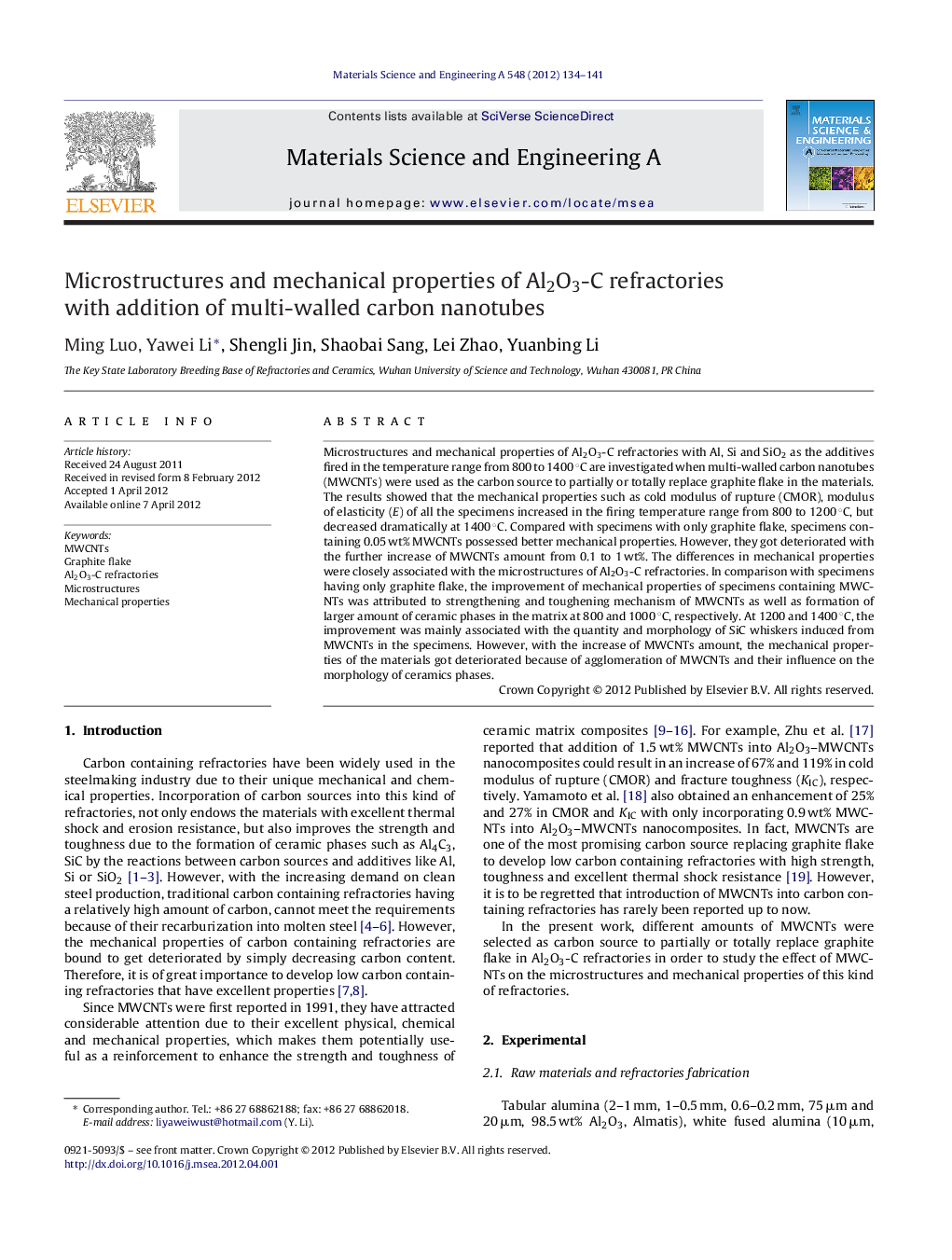| کد مقاله | کد نشریه | سال انتشار | مقاله انگلیسی | نسخه تمام متن |
|---|---|---|---|---|
| 1577392 | 1514795 | 2012 | 8 صفحه PDF | دانلود رایگان |

Microstructures and mechanical properties of Al2O3-C refractories with Al, Si and SiO2 as the additives fired in the temperature range from 800 to 1400 °C are investigated when multi-walled carbon nanotubes (MWCNTs) were used as the carbon source to partially or totally replace graphite flake in the materials. The results showed that the mechanical properties such as cold modulus of rupture (CMOR), modulus of elasticity (E) of all the specimens increased in the firing temperature range from 800 to 1200 °C, but decreased dramatically at 1400 °C. Compared with specimens with only graphite flake, specimens containing 0.05 wt% MWCNTs possessed better mechanical properties. However, they got deteriorated with the further increase of MWCNTs amount from 0.1 to 1 wt%. The differences in mechanical properties were closely associated with the microstructures of Al2O3-C refractories. In comparison with specimens having only graphite flake, the improvement of mechanical properties of specimens containing MWCNTs was attributed to strengthening and toughening mechanism of MWCNTs as well as formation of larger amount of ceramic phases in the matrix at 800 and 1000 °C, respectively. At 1200 and 1400 °C, the improvement was mainly associated with the quantity and morphology of SiC whiskers induced from MWCNTs in the specimens. However, with the increase of MWCNTs amount, the mechanical properties of the materials got deteriorated because of agglomeration of MWCNTs and their influence on the morphology of ceramics phases.
► Effect of MWCNTs on microstructures and mechanical properties was studied.
► MWCNTs themselves strengthened and toughened refractories at low firing temperature.
► Most of MWCNTs were consumed at firing temperature above 1000 °C.
► MWCNTs promoted the formation of ceramics phases in the materials.
► The mechanical properties were greatly influenced by the ceramics phases change.
Journal: Materials Science and Engineering: A - Volume 548, 30 June 2012, Pages 134–141